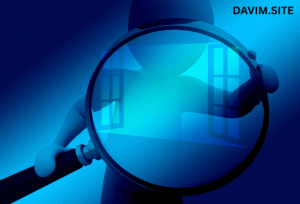Organizations of all kinds are looking for methods to run more effectively, match their teams, and accomplish continual development in the fast-paced and competitive corporate scene of today. The Entrepreneurial Operating System (EOS) is one tested fix that is becoming well-known. EOS provides a whole collection of basic ideas and useful tools to drive performance and responsibility, meant to enable entrepreneurs to get what they desire from their companies.
What is the Entrepreneurial Operating System, and how can it change your leadership style or business? We will discuss the fundamental elements of EOS, its advantages, implementation techniques, and ways in which it may support sustainable corporate development in this in-depth tutorial.
What is the Entrepreneurial Operating System (EOS)?
Author of the best-selling book Traction: Get a Grip on Your Business Gino Wickman created the all-encompassing business management system known as the Entrepreneurial Operating System, or EOS. Emphasizing vision, traction, and health, EOS is designed to enable entrepreneurs and leadership teams to firmly grasp their operations.
EOS is purposefully simple, practical, and actionable, unlike many sophisticated corporate systems.
It doesn’t involve theoretical jargon or endless strategies. Instead, it offers real-world tools and processes that any organization can implement to:
-
Gain clarity on vision and direction
-
Improve team alignment and accountability
-
Solve issues permanently
-
Strengthen company culture
-
Create measurable results
Whether you’re a startup or an established company, EOS provides a scalable structure for growth.
Core Components of EOS
EOS is built on Six Key Components that represent the fundamental aspects of any business:
1. Vision
Every organization needs a clear and compelling vision. EOS helps leadership teams define where the company is going and how it will get there. This includes identifying core values, core focus, 10-year target, marketing strategy, 3-year picture, 1-year plan, quarterly goals (Rocks), and the issues list.
2. People
Having the right people in the right seats is crucial. EOS uses tools like the People Analyzer and the Accountability Chart to ensure that every team member aligns with the company’s values and is well-suited for their role.
3. Data
EOS encourages organizations to run on data, not ego or opinion. It emphasizes creating a scorecard that includes key measurable metrics. This allows leaders to track performance and spot problems early.
4. Issues
Problems are inevitable, but EOS teaches you to identify, discuss, and solve (IDS) issues in a systematic way. The goal is to address root causes, not just symptoms, for lasting solutions.
5. Process
Well-documented and consistently followed processes create efficiency and scalability. EOS provides a structure to document and refine core business processes, from HR to sales, to ensure consistent execution.
6. Traction
Vision without execution is hallucination. EOS introduces a discipline of execution using tools like Rocks (90-day goals) and weekly Level 10 Meetings to keep everyone focused, aligned, and accountable.
Benefits of Implementing EOS in Your Business
Businesses that implement the Entrepreneurial Operating System typically see powerful benefits across the board. Here are some of the top advantages:
✅ Improved Clarity and Focus
EOS helps clarify what success looks like and how to get there. Everyone on the team knows the company’s vision, their role, and what’s expected.
✅ Stronger Team Alignment
When leadership and staff are aligned on goals, values, and priorities, collaboration improves. EOS creates a unified and empowered team culture.
✅ Better Decision-Making
Data-driven scorecards and regular issue-solving sessions result in more confident and strategic decisions.
✅ Increased Accountability
The EOS model holds people accountable through measurable outcomes, clear roles, and transparent processes.
✅ Greater Efficiency and Scalability
Documented processes and a streamlined operational model allow businesses to grow without chaos or confusion.
How to Implement EOS in Your Business
While some companies opt to implement EOS independently using Gino Wickman’s Traction, many choose to work with a certified EOS Implementer to ensure success. Here’s a general roadmap to implementation:
1. Read the EOS Books
Start with Traction, followed by companion books like Get a Grip, Rocket Fuel, and What the Heck is EOS?
2. Conduct a Leadership Team Session
Gather your leadership team for a full-day EOS overview. Identify your current challenges and align on objectives.
3. Build the Vision/Traction Organizer (V/TO)
This two-page tool crystallizes your company’s vision and plan. It outlines your core values, niche, marketing strategy, and goals.
4. Establish Scorecards and Accountability
Assign metrics to track performance and define clear responsibilities for team members.
5. Set Rocks and Start Level 10 Meetings
Rocks are your 90-day goals. Weekly Level 10 Meetings keep your team focused and proactive in solving issues.
6. Strengthen Each Component Over Time
EOS is not a one-time event. It’s a process of continuous improvement, typically over 18–24 months for full adoption.
EOS Tools That Make a Difference
Some of the key tools EOS offers include:
-
Vision/Traction Organizer (V/TO)
-
People Analyzer
-
Accountability Chart
-
Meeting Pulse
-
Rocks and Scorecards
-
Issues Solving Track (IDS)
Each tool is designed to simplify operations while keeping the entire organization aligned and forward-moving.
EOS vs Other Business Systems
You may find it fascinating how EOS stacks up against other corporate operating systems such as Agile frameworks, Scaling Up, or OKRs (Objectives and Key Results). EOS is mostly apart from other systems in simplicity and simplicity of use.
EOS has a complete and all-encompassing strategy, whereas OKRs concentrate more on goal-setting and scaling up targets high-growth companies. It aids in your growth in a healthy and under-control way as well as in your development.
Is EOS Right for Your Business?
EOS is ideal for:
-
Companies with 10–250 employees
-
Leadership teams struggling with alignment or execution
-
Businesses experiencing rapid growth or stagnation
-
Entrepreneurs tired of constant firefighting
-
Organizations aiming to scale without losing control
If you’re looking to transition from a reactive to a proactive leadership style, EOS might be the perfect solution.
Real-World Success Stories with EOS
Thousands of companies across industries have used EOS to turn their businesses around. Case studies show:
-
Improved profitability
-
Higher employee satisfaction
-
Better leadership cohesion
-
Faster decision-making cycles
Organizations like Nexus IT, Tasty Catering, and imageOne have publicly shared how EOS has been pivotal in achieving and sustaining operational excellence.

Common EOS Challenges and How to Overcome Them
While EOS is effective, implementation isn’t without its hurdles:
❌ Resistance to Change
Teams used to operating in chaos may resist structured systems. Solution: Lead with transparency and show quick wins.
❌ Inconsistent Use of Tools
Some teams cherry-pick tools and lose traction. Solution: Commit to all six components and use the full EOS process.
❌ Lack of Accountability
If leadership doesn’t buy in, it trickles down. Solution: Get full commitment from the top before rolling out EOS company-wide.
Final Thoughts: Embrace the EOS Journey
The Entrepreneurial Operating System is a perspective change that redefines how you operate your company, not just a collection of tools. Focusing on vision, execution, and team health helps EOS enable businesses to grow confidently and clearly.
EOS might be your road to a more steady, growth-ready company if you’re sick of operating your company based on gut feeling, uneven performance, or continual crisis management.
Ready to Implement EOS?
Whether you choose to go it alone with Traction or hire a certified EOS Implementer, now is the time to take the first step. Start building a stronger, more organized, and more profitable business—the EOS way.
